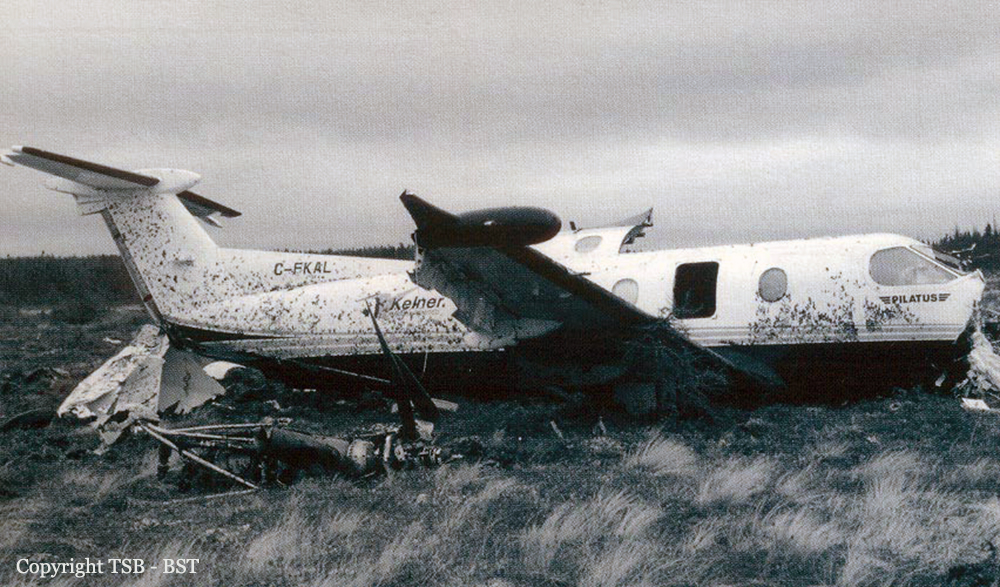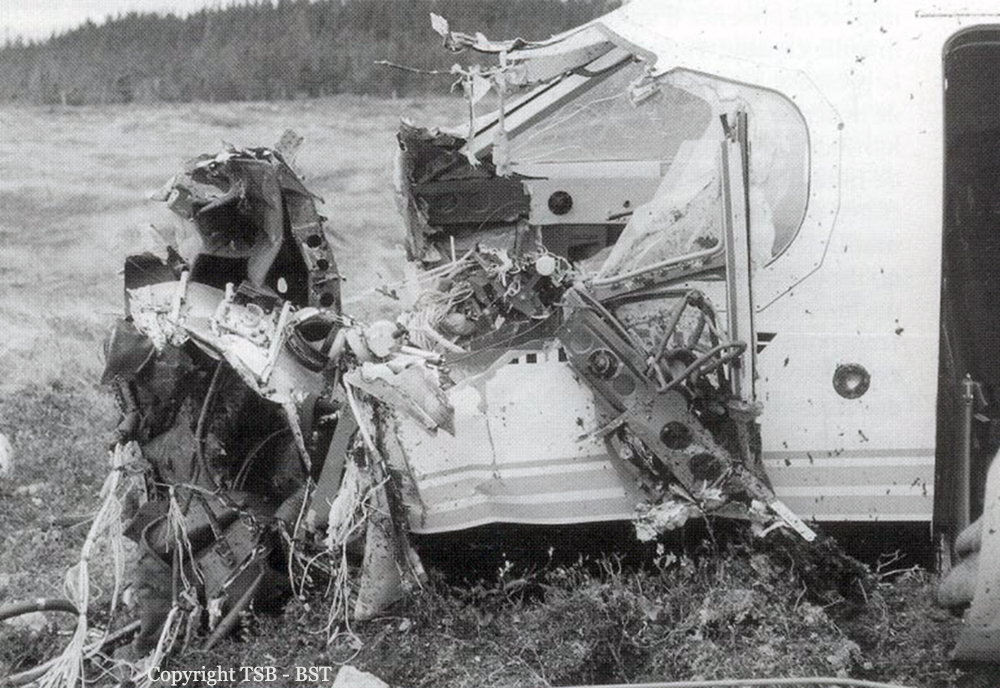Country
Crash of a Pilatus PC-12/45 in Brno: 2 killed
Date & Time:
May 26, 1998 at 0615 LT
Registration:
HB-FOJ
Survivors:
No
Schedule:
Brno - Altenburg
MSN:
158
YOM:
1996
Crew on board:
1
Crew fatalities:
Pax on board:
1
Pax fatalities:
Other fatalities:
Total fatalities:
2
Captain / Total hours on type:
397.00
Circumstances:
After takeoff from runway 28 at Brno-Tuřany Airport, the pilot reported on the tower frequency that she needs to land. She received instruction to continue a southern (left-hand) circuit and to report final for runway 28. At this time the first contact was made with the aeroplane by secondary radar at a height of about 520 feet AAL and 560 metres north from runway 28. The pilot did not confirm the instruction, did not turn for the southern (left-hand) circuit, but continued to turn for the northern (right-hand) one. Since she did not confirm repeated approval for the left-hand circuit and continued the right-hand one, she received information from tower that it is possible to continue the northern circuit, clearance to land to runway 28 ans was offered assistance after landing. Without any confirmation. At this time the height was approximately 930 feet AAL and position 2,8 km north from the aerodrome. The aeroplane started gradually to descend and to turn as the pilot probably intended to accomplish approach for runway 28. However it did not happen and the aeroplane hit the ground at 0615,28 approximately 600 metres north from the runway 28 threshold. The aeroplane was flying very low in the last phase of flight according to statements of witnesses. The last height recorded by the secondary radar was approximately 120 feet AAL 13 seconds prior to the impact onto ground. Witnesses described the attitude of the aeroplane prior to strike to ground as very unusual. Both occupants were killed.
Probable cause:
The following factors were identified:
- The critical situation was caused by flap asymmetry. It occurred as a result of shear in torsion of the left-hand inner flexible shaft.
- Loss of controllability caused by reduction of airspeed with use of Beta range in the final phase of the flight was the direct cause of the accident.
- Incorrect application of emergency procedures for flap retraction listed in the Pilot's Operating Handbook was the main cause of the accident.
- The critical situation was caused by flap asymmetry. It occurred as a result of shear in torsion of the left-hand inner flexible shaft.
- Loss of controllability caused by reduction of airspeed with use of Beta range in the final phase of the flight was the direct cause of the accident.
- Incorrect application of emergency procedures for flap retraction listed in the Pilot's Operating Handbook was the main cause of the accident.
Final Report:
Crash of a Pilatus PC-12/45 in Clarenville
Date & Time:
May 18, 1998 at 1741 LT
Registration:
C-FKAL
Survivors:
Yes
Schedule:
Saint John’s – Goose Bay
MSN:
151
YOM:
1996
Flight number:
FKL151
Crew on board:
1
Crew fatalities:
Pax on board:
9
Pax fatalities:
Other fatalities:
Total fatalities:
0
Captain / Total hours on type:
800.00
Aircraft flight hours:
3913
Circumstances:
The aircraft, a Pilatus PC-12, serial number 151, was on a scheduled domestic flight from St. John's, Newfoundland, to Goose Bay, Labrador, with the pilot, a company observer, and eight passengers on board. Twenty-three minutes into the flight, the aircraft turned back towards St. John's because of a low oil pressure indication. Eight minutes later, the engine(Pratt & Whitney PT6A-67B) had to be shut down because of a severe vibration. The pilot then turned towards Clarenville Airport, but was unable to reach the airfield. The aircraft was destroyed during the forced landing in a bog one and a half miles from the Clarenville Airport. The pilot, the company observer, and one passenger sustained serious injuries. The Board determined that the pilot did not follow the prescribed emergency procedure for low oil pressure, and the engine failed before he could land safely. The pilot's decision making was influenced by his belief that the low oil pressure indications were not valid. The engine failed as a result of an interruption of oil flow to the first-stage planet gear assembly; the cause of the oil flow interruption could not be determined.
Probable cause:
The pilot did not follow the prescribed emergency procedure for low oil pressure, and the engine failed before he could land safely. The pilot's decision making was influenced by his belief that the low oil pressure indications were not valid. The engine failed as a result of an interruption of oil flow to the first-stage planet gear assembly; the cause of the oil flow interruption could not be determined.
Final Report:


Crash of a Pilatus PC-12/45 in the Ngong Hills: 9 killed
Date & Time:
Feb 13, 1998 at 1130 LT
Registration:
ZS-OFC
Survivors:
No
MSN:
206
YOM:
1998
Crew on board:
1
Crew fatalities:
Pax on board:
8
Pax fatalities:
Other fatalities:
Total fatalities:
9
Circumstances:
The single engine aircraft was returning to Nairobi with one pilot and eight passengers who were returning to the capital city following a three-day safari and cinema trip. While descending to Nairobi-Wilson Airport, the pilot encountered poor visibility due to mist and failed to realize his altitude was insufficient when the aircraft struck the slope of a mountain located in the Ngong Hills, about 20 km southwest of Wilson Airport. The aircraft was destroyed upon impact and all nine occupants were killed.
Probable cause:
Controlled flight into terrain after the pilot descended below the minimum safe altitude in misty conditions.

